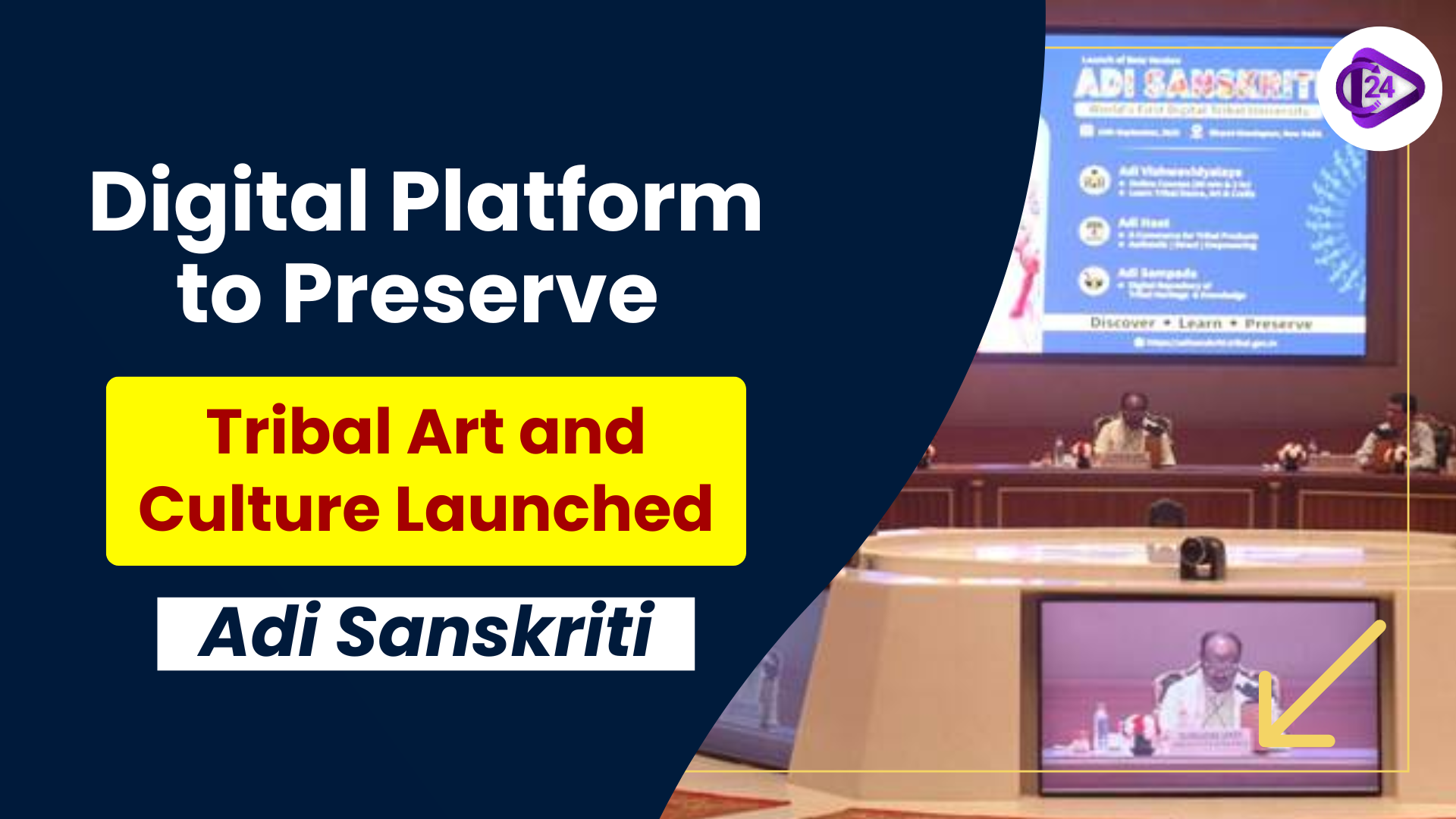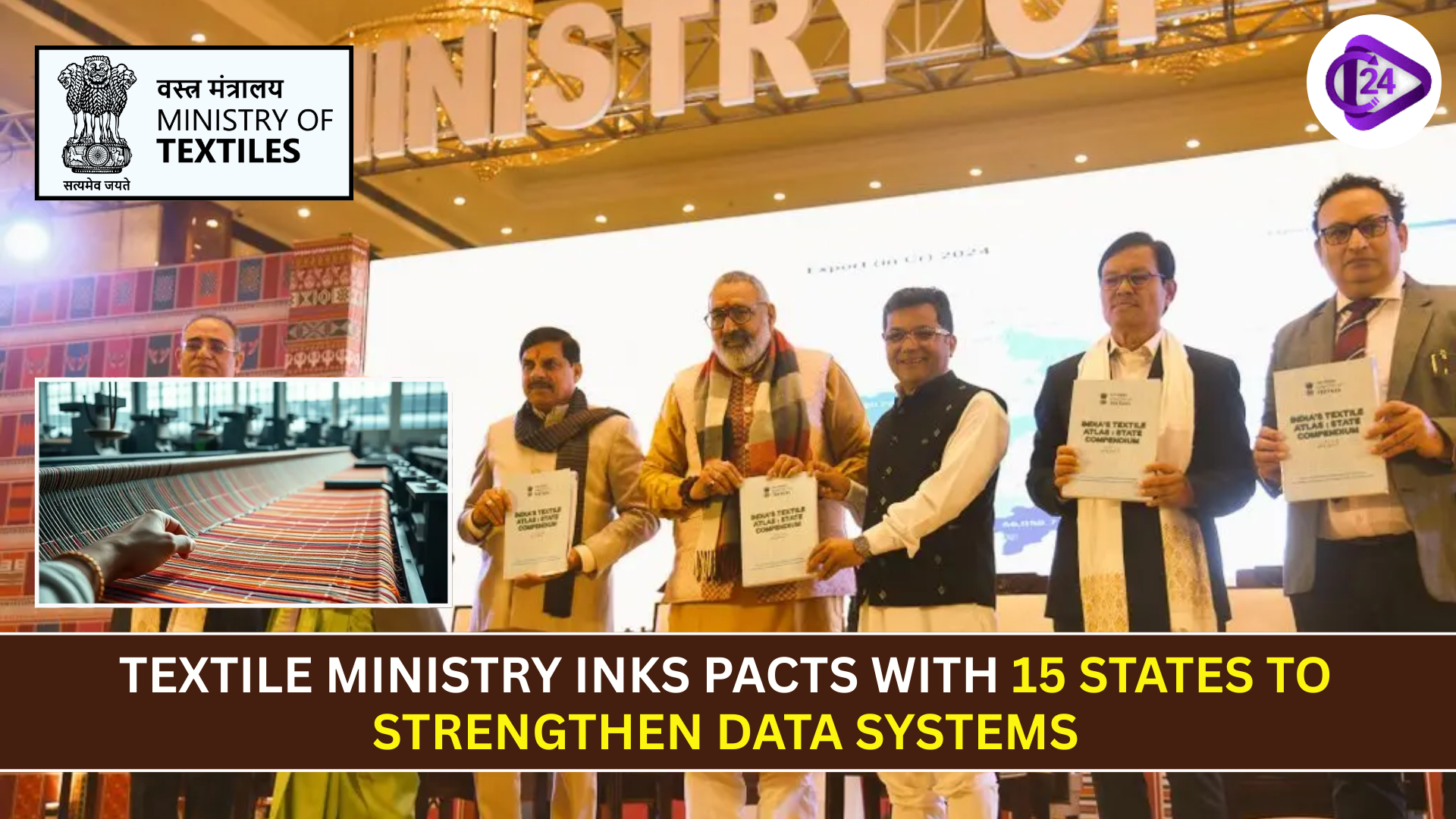
The Union Tribal Affairs ministry released the beta version of Adi Sanskriti, an online platform to preserve and promote tribal artforms and heritage. Imagined as the first Digital University of tribal communities in the world, Adi Sanskriti will include three main elements: Adi Vishwavidyalaya (Digital Tribal Art Academy), Adi Sampada (Socio-Cultural Repository), and Adi Haat (digital marketplace). It will also be used as an online marketplace to connect tribal artisans and buyers where the traditional products of the people will be availed in a digital market.
Key Points in Detail
Adi Sanskriti Purpose and Vision.
-
The site is meant to be a storehouse of tribal culture where the art, craft, language, and knowledge of tribal people in India are encouraged.
-
It seeks to be a Digital University to preserve and advance tribal heritage, empowering tribal artisans, and to offer a sustainable example of how cultural preservation can happen.
Components of the Platform
-
Adi Vishwavidyalaya (Digital Tribal Art Academy): The goal of this organization is to provide courses and training in different forms of tribal art intended to facilitate the transfer of knowledge and the development of skills.
-
Adi Sampada (Socio-Cultural Repository): An online museum to store tribal culture, such as traditional practices, folklores and arts.
-
Adi Haat (Digital Marketplace): Online marketplace to market and demonstrate the products created by tribal artisans so as to empower economically and spread the knowledge about the tribal handicrafts.
Features and Benefits
-
The site will enable the linkage of tribal artisans to the international market, making the traditional tribal products more visible and gain more sales.
-
It will be a social-cultural repository, where tribe knowledge can be stored to future generations, and also accessible to a wider audience.
-
Economic empowerment of tribal communities by advancing digital technology in the craft and art fields.
Government Support
-
The program is among the overall governmental initiatives to secure the wellbeing of tribes, inclusive development, and cultural diversity of India.
-
The platform will also lead to the encounter of tribal communities in digital literacy and inclusion in the expanding digital economy.
Conclusion
The introduction of the Adi Sanskriti online platform is a massive move to the saving of tribal art and culture as well as the economic empowerment of the tribal people by digitally integrating them. It provides new opportunities in sustainable economic growth by exposing tribal artisans to the world markets. In the case of UPSC, this project indicates the use of technology in the cultural heritage and inclusive growth, which is consistent with the governmental interests in the empowerment of tribal groups and their digitalization.




 India’s First Fully Paperless District Judiciary Launched
India’s First Fully Paperless District Judiciary Launched Textile Ministry Signs Pacts with 15 States to Boost Data Systems Efficiency
Textile Ministry Signs Pacts with 15 States to Boost Data Systems Efficiency Uttar Pradesh Launches State's First Braille Library At DSMNRU, Lucknow
Uttar Pradesh Launches State's First Braille Library At DSMNRU, Lucknow Election Commission Defends Voter Roll Revision, Says Foreigners Must Be Removed
Election Commission Defends Voter Roll Revision, Says Foreigners Must Be Removed Telangana Legislative Assembly Scraps 2-Child Policy For Local Polls
Telangana Legislative Assembly Scraps 2-Child Policy For Local Polls Karnataka Makes History with Highest-Ever Organ Donations in 2025
Karnataka Makes History with Highest-Ever Organ Donations in 2025 India's 'Diamond Capital' Set To Become The Country's First Slum-Free City
India's 'Diamond Capital' Set To Become The Country's First Slum-Free City BEE Standards and Labelling Programme: Star Ratings, Benefits & Products Covered
BEE Standards and Labelling Programme: Star Ratings, Benefits & Products Covered Sangita Kalanidhi Award Conferred on Violinist R.K. Shriramkumar
Sangita Kalanidhi Award Conferred on Violinist R.K. Shriramkumar Goa Announces Third District Kushavati: A Historic Development
Goa Announces Third District Kushavati: A Historic Development






